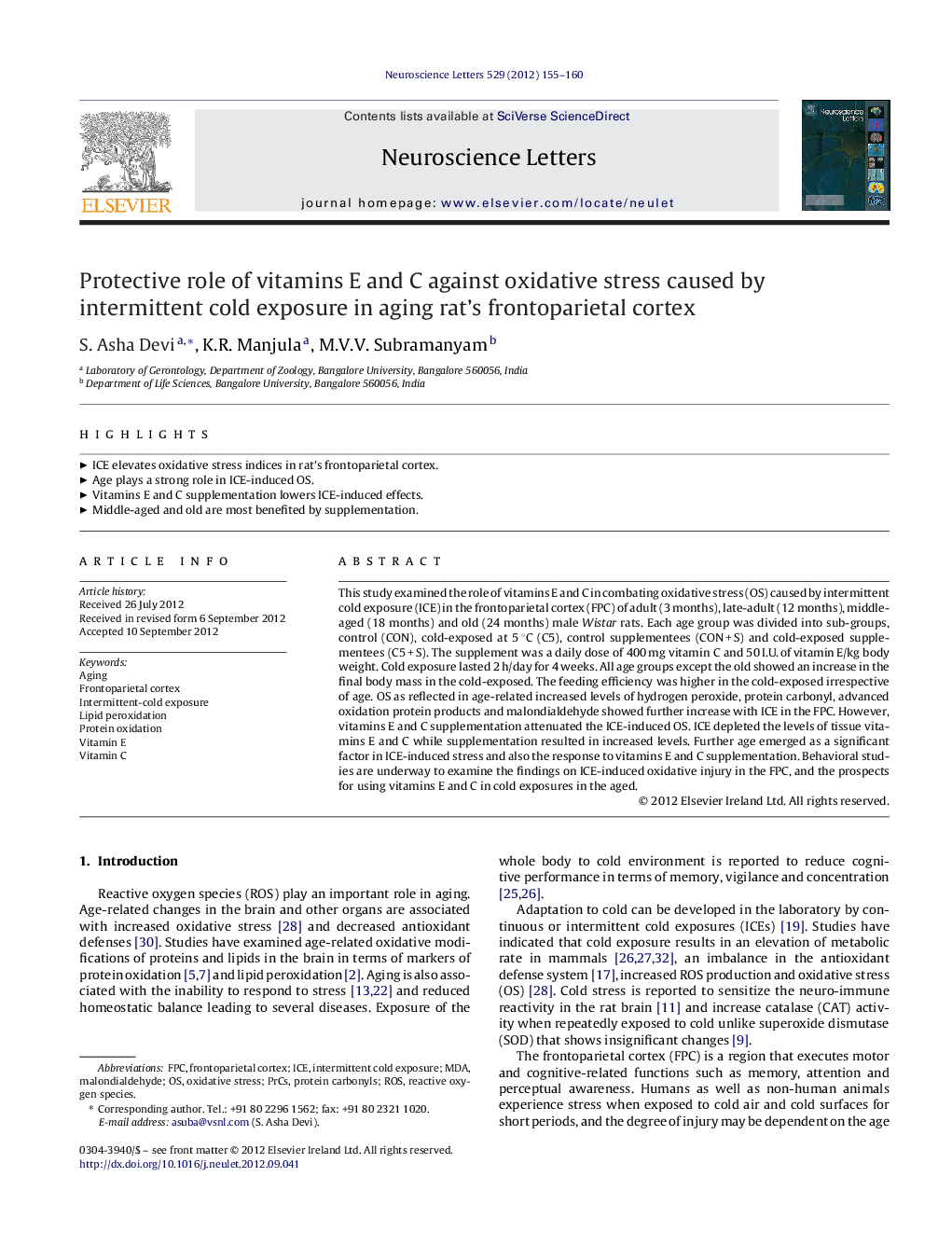| کد مقاله | کد نشریه | سال انتشار | مقاله انگلیسی | نسخه تمام متن |
|---|---|---|---|---|
| 4344286 | 1296643 | 2012 | 6 صفحه PDF | دانلود رایگان |

This study examined the role of vitamins E and C in combating oxidative stress (OS) caused by intermittent cold exposure (ICE) in the frontoparietal cortex (FPC) of adult (3 months), late-adult (12 months), middle-aged (18 months) and old (24 months) male Wistar rats. Each age group was divided into sub-groups, control (CON), cold-exposed at 5 °C (C5), control supplementees (CON + S) and cold-exposed supplementees (C5 + S). The supplement was a daily dose of 400 mg vitamin C and 50 I.U. of vitamin E/kg body weight. Cold exposure lasted 2 h/day for 4 weeks. All age groups except the old showed an increase in the final body mass in the cold-exposed. The feeding efficiency was higher in the cold-exposed irrespective of age. OS as reflected in age-related increased levels of hydrogen peroxide, protein carbonyl, advanced oxidation protein products and malondialdehyde showed further increase with ICE in the FPC. However, vitamins E and C supplementation attenuated the ICE-induced OS. ICE depleted the levels of tissue vitamins E and C while supplementation resulted in increased levels. Further age emerged as a significant factor in ICE-induced stress and also the response to vitamins E and C supplementation. Behavioral studies are underway to examine the findings on ICE-induced oxidative injury in the FPC, and the prospects for using vitamins E and C in cold exposures in the aged.
► ICE elevates oxidative stress indices in rat's frontoparietal cortex.
► Age plays a strong role in ICE-induced OS.
► Vitamins E and C supplementation lowers ICE-induced effects.
► Middle-aged and old are most benefited by supplementation.
Journal: Neuroscience Letters - Volume 529, Issue 2, 7 November 2012, Pages 155–160